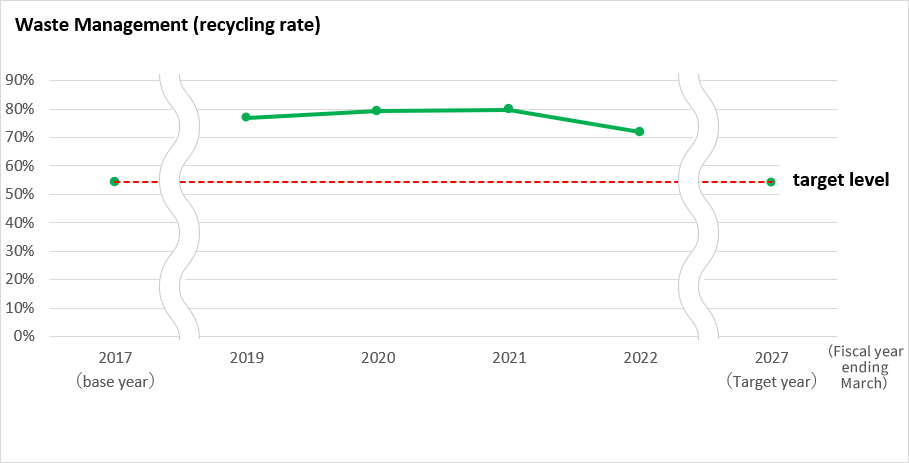GHG
Solar Power Generation
Introduction of solar power generation equipment
Solar panels have been installed on the rooftops of logistics and retail properties owned by DHR, and DHR utilizes the renewable energy they generate.
| Number of Properties | Power generated in FY ended Mar. 2020 | Power generated in FY ended Mar. 2021 | Power generated in FY ended Mar. 2023 | |
|---|---|---|---|---|
| Solar power generation equipment installations | 19 properties | MWh | MWh | 19,805MWh |
- Amount of power generated is calculated only for properties with solar power generation equipment for which the requisite data are available.
Main properties with solar power generation equipment installed
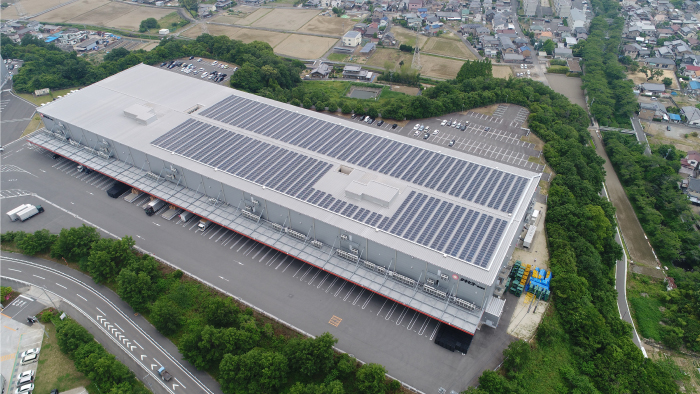
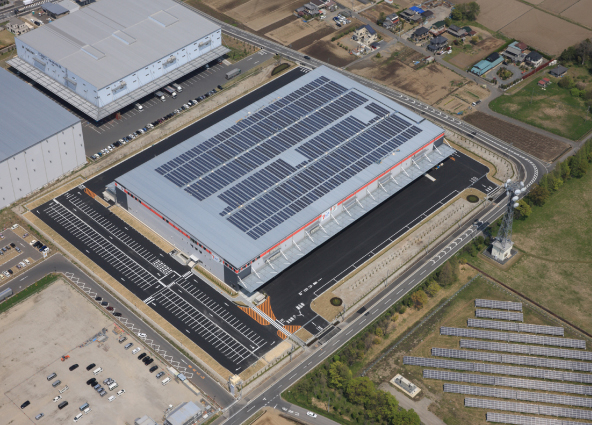
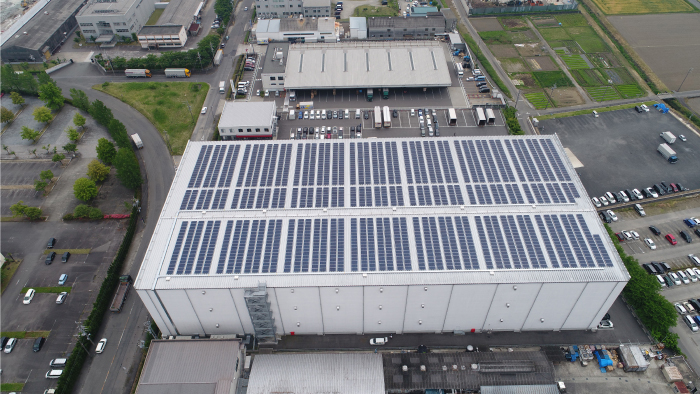
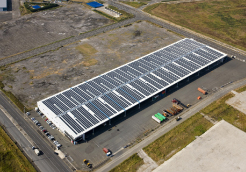
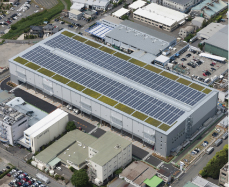
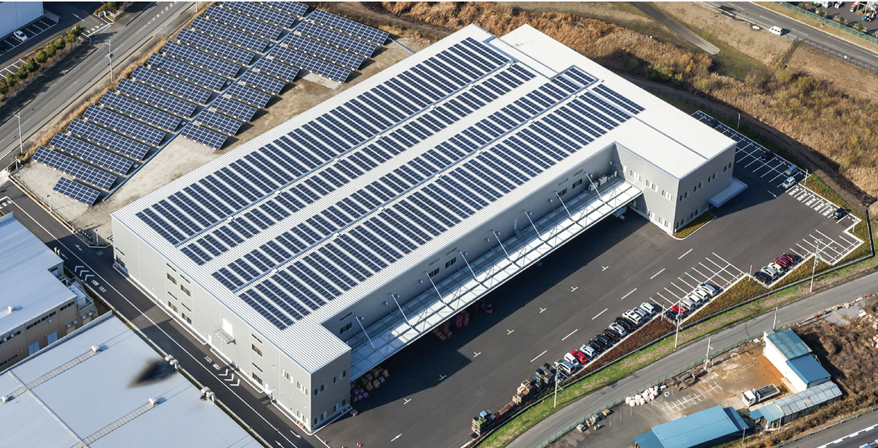
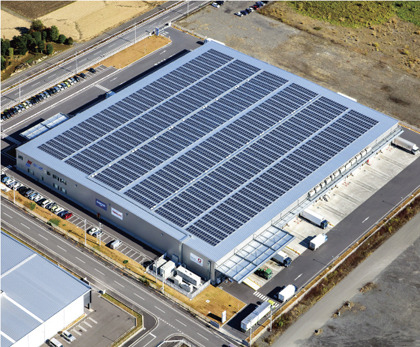
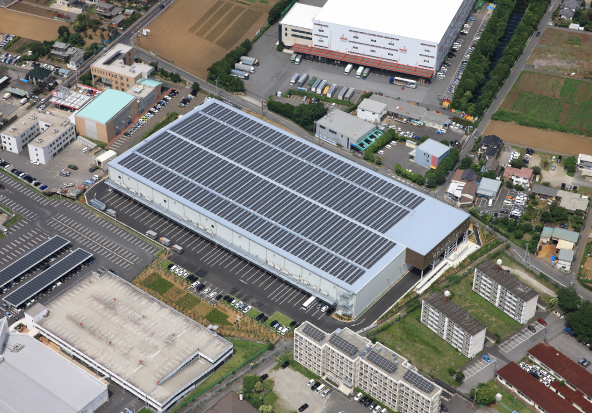
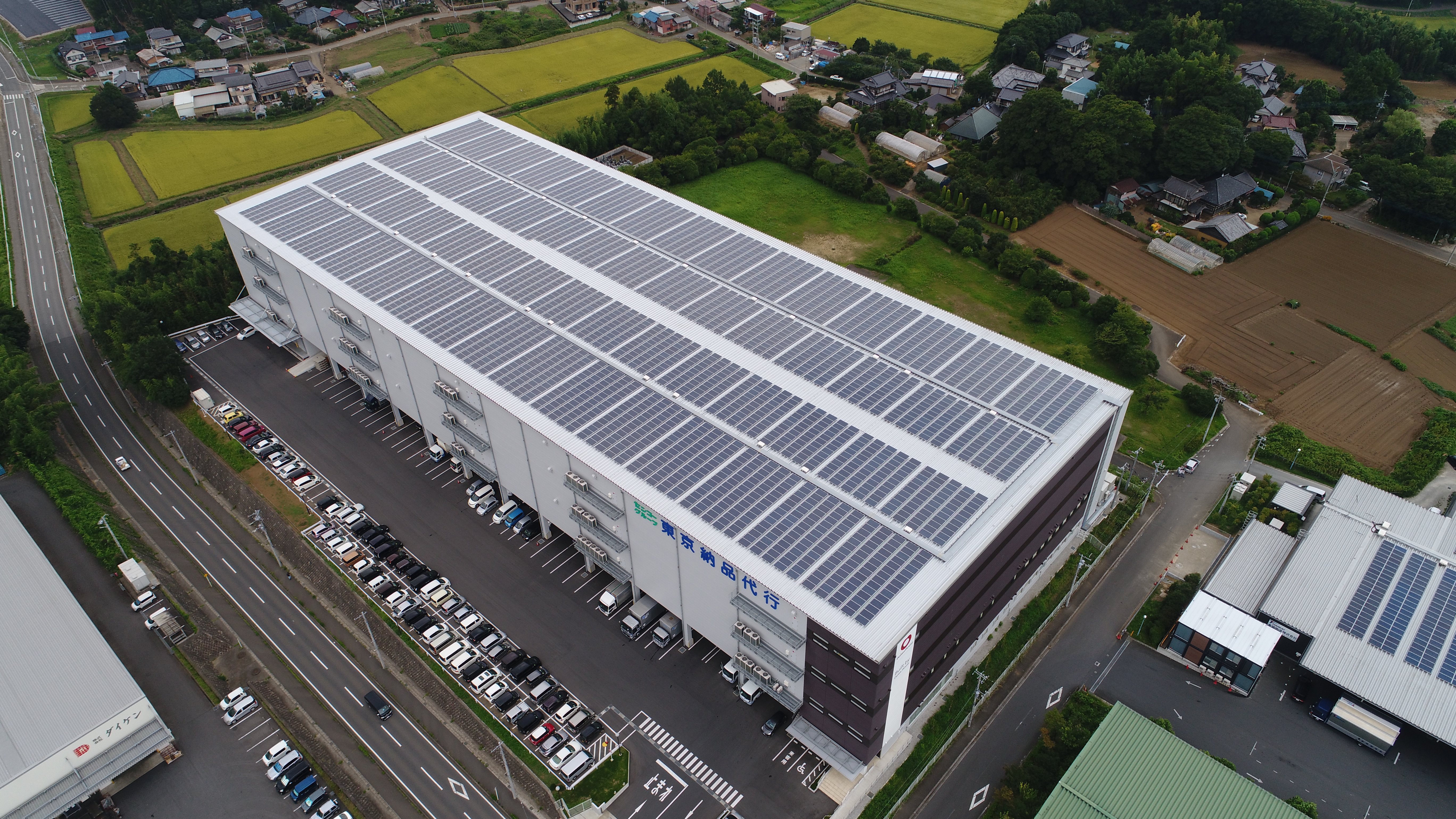
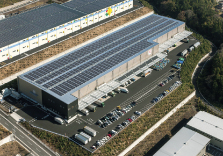
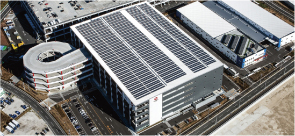
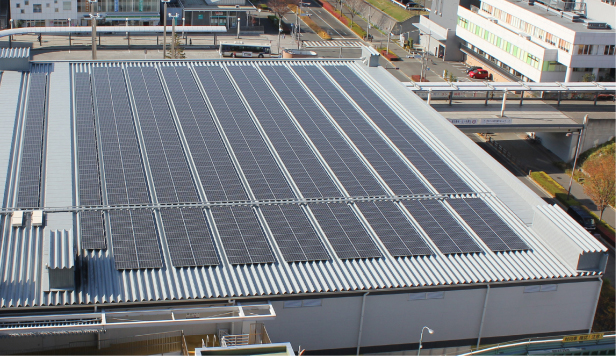
Status of conversion to LED lighting
| Number of portfolio properties (Note 2) | Number of properties with LED lighting (Note 3) | Percentage of properties with LED lighting | |
|---|---|---|---|
| Logistics | 66 | 62 | 93.9% |
| Residential | 129 | 122 | 94.6% |
| Retail | 16 | 15 | 93.8% |
| Hotel | 6 | 6 | 100.0% |
| Other | 6 | 4 | 66.7% |
| Total | 223 | 209 | 93.7% |
- The number of properties is as of March 31, 2023.
- Excludes land properties.
- The number of properties in which LED lighting has been installed in at least half the area of common areas (in properties with common areas) or at least half the area of the entire property (in properties leased as an entire building with no common areas).
Example of conversion to LED lighting
- Conversion to LED lighting at D Project Kawagoe III
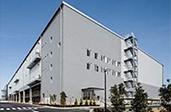

| Estimated CO2 reduction (Note) | Estimated running cost reduction |
|---|---|
|
-53.1% -472.9 tons/year |
-53.1% -20,372 thousand/year |

- Calculated using an emission factor of 0.000441 t-CO2/kWh
Energy
Introduction of Smart Meters
Smart meters* are installed at “Royal Parks Toyosu” and other properties.
- A smart meter is a next-generation watt-hour meter equipped with telecommunications functions for digitally measuring electricity. This provides a detailed grasp of patterns in power consumption data to analyze optimal consumption behavior using the aggregated data.
Energy Saving Measures
DHR is taking the measures at its properties in consideration of the environment as shown below.
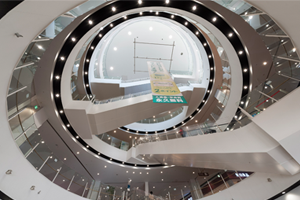
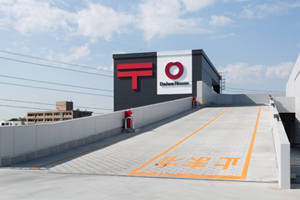
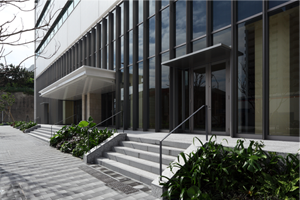
the use of natural light
Energy Consumption (reduction rate of intensity (MWh/m2))
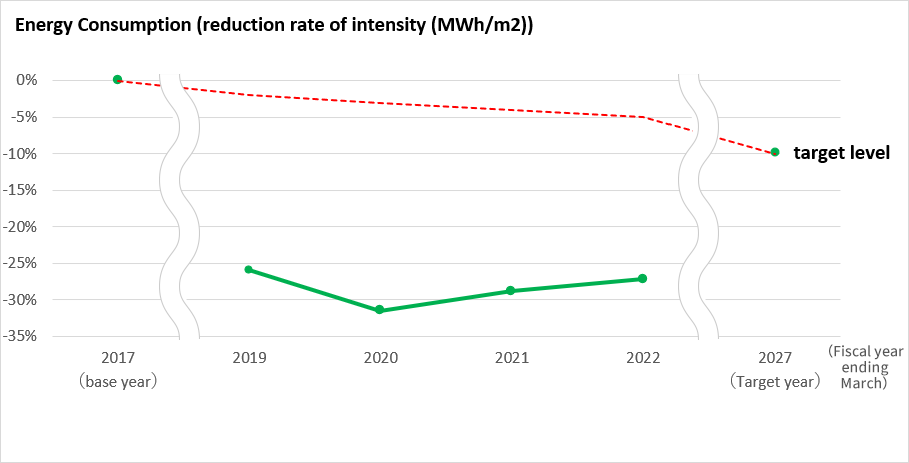
Water
Policy and Basic Approach
The water supply is expected to become unstable as a result of climate change; around the world, it is becoming more important to conserve aquatic environments. As water risks are highly influenced by local factors, DHR evaluates water stress at its properties and uses hazard maps to assess the risk of water damage. DHR also promotes efforts to reduce water consumption at its properties to ensure that water resources are available for continued use.
| Target |
Reduce consumption rate to the consumption intensity of fiscal year ended March 2018 (base year) or less (10-year period from 2018 to 2027) |
|
|---|---|---|
| Actual |
0.3352 ㎥/㎡ Fiscal year ended March 2023 actual |
0.8205 ㎥/㎡ Fiscal year ended March 2018 (base year) actual |
Effective Use of Rainwater, Groundwater, and Greywater
DHR reduces tap water use and the environmental impact of its owned properties by effectively using rainwater, groundwater, and greywater (used tap water recycled for flushing toilets, watering, and other purposes before being discharged into sewer systems).
At “DPL Nagareyama I” and “DPL Misato,” irrigation systems that use rainwater and automatic irrigation timers to conserve water and improve landscape management are installed.
The grounds around the “ACROSSMALL Shinkamagaya” is stable with plenty of good quality water. DHR implemented construction to switch from tap water to groundwater, which suppressed the tap water consumption by supplying water to the sports club with a pool and other such facilities.
DHR uses gray water at the “Naha Shin-Toshin Center Building (Daiwa Roynet Hotel Naha-Omoromachi).”
Adoption of Water Conservation Equipment
DHR is furthering the adoption of water conservation equipment at the time of renewal of facilities or equipment at its properties in an effort to reduce water consumption.
Water Stress
DHR does not own any properties in regions where the water stress is “high” or “extremely high.”
Water Consumption (reduction rate of intensity (㎥/㎡))
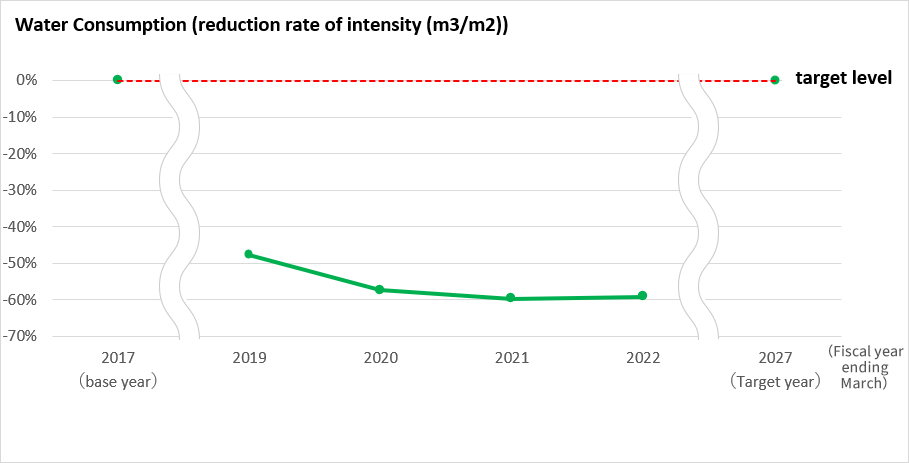
Waste Management/Pollution Prevention
Policy and Basic Approach
The increasing world population and other factors are triggering a substantial rise in consumption of global natural resources; resource depletion and the negative impacts of waste on the environment are becoming more severe. The “2030 Agenda for Sustainable Development” adopted at the United Nations Summit in 2015 calls for a “vast reduction in waste by 2030.” Interest is mounting in the “circular economy”, in Japan and abroad, in which products and other items of value are continuously recycled and reused. DHR is taking steps to reduce waste and increase recycling rates at portfolio properties.
| Target |
Improve recycling rate to the rate of fiscal year ended March 2018 (base year) or higher (10-year period from 2018 to 2027) |
|
|---|---|---|
| Actual |
71.9% Fiscal year ended March 2023 actual |
54.2% Fiscal year ended March 2018 (base year) actual |
Pollution Prevention
Before acquiring any property, DHR shall conduct detailed environmental due diligence on the matters listed below.During the due diligence process, DHR comprehensively assesses the property’s investment value, weighing its impact on DHR’s overall portfolio, contribution to expected increase in value and other relevant considerations while consulting a fair real-estate appraisal by a third party with sufficient skill and experience in due diligence studies.
a. Soil and ground conditions, buried objects, soil contamination, etc.
b. Status with respect to hazardous substances (asbestos, PCBs, etc.)
Furthermore, DHR maintains the proper processing and procedures in accordance with laws and regulations for any chemical substances present on its properties to strictly handle all chemical substances in the most thorough manner to ensure no leaks or emissions.
Soil Contamination Countermeasures
“FOLEO Ome Imai” was built on the land of a former electronic component production plant. Even though the soil contamination had been verified, construction work was conducted by properly excavating and removing the soil. DHR acquired the property after confirming that the topsoil survey for all specific hazardous chemicals after the construction work showed none of the substances were detected and all were in compliance with regulatory standards.
Waste Management (recycling rate)
